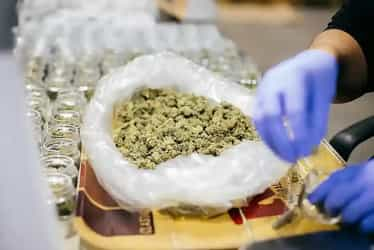
Dec 1, 2015
Increasing consumer demand for flavor and fragrance products is driving companies to launch new and innovative products to better position themselves in the flavors and fragrances industry.
Once such company, Boston-based Ginkgo, genetically programs microbes to produce molecules used in flavors, fragrances, cosmetics and nutritional ingredients. The self-described “organism design firm” manufactures flower oils and other natural products. To date, the biotechnology startup has secured 20 organism design contracts with customers.
Recently the company announced a partnership with a French fragrance maker to develop new fragrance ingredients. The two companies previously worked together to create an exclusive rose-scented perfume based on a unique combination of genes from roses and other flowers.
“The global flavor and fragrance market has grown exponentially in the last few years and growth is expected to continue,” says BCC Research analyst Natraj Pandal. “The market is being driven by changing consumer preferences, significant technological advances, and increasing demand from emerging economies for natural flavors and rising consumer interest in more complex and authentic flavors and fragrances.”
Essential oils and aroma chemicals are the two types of ingredients used in the flavor and fragrance market, Pandal says. She explains that synthetic ingredients used to manufacture flavors and fragrances are drawn from natural raw material or organic chemical derivatives of materials, such as turpentine, petroleum and acetylene. Natural ingredients are compounds extracted from plants through different processes such as distillation, extraction or solidification. Natural ingredients are primarily composed of essential oils.
For Gingko, the process begins when a client desires to create or change a certain note in a product scent. If the product already exists, the company’s engineers then determine which genes in the original product will produce the desired results when changed, reports Buzzfeed’s Stephanie M. Lee.
“After devising a genetic sequence that includes those changes, the company buys DNA fragments from outside suppliers. Its robots stitch those genes together into the much longer, desired sequence, and the experimentation continues,” writes Lee.
Gingko then transfers the genes into yeast that will produce fragrance ingredients as part of a fermentation process similar to how a brewery brews beer, Christina Agapakis, Ginkgo’s creative director, told Cosmetic Design’s Deanna Ultroske.
“As yeast grows, it ferments sugar into alcohol and many of the flavors that are found in beer. By engineering the yeast with enzymes from other plants, our strains can produce different flavors and fragrances, which can then be extracted from the cells and used in perfumes and in other products,” Agapakis explains.
“The essential oils segment currently dominates the global flavor and fragrance ingredient market with a 67% market share in 2013 due to increasing consumer demand for natural products,” Pandal says. “Globally, the flavor and fragrance market was worth $23.9 billion in 2013 and is expected to reach $33.5 billion by 2019, growing at an estimated compound annual growth rate (CAGR) of 5.8% from 2014 to 2019."

What is Hydrotreated Vegetable Oil (HVO)? Hydrotreated Vegetable Oil (HVO) is a ...

Cost, quality, and branding have traditionally driven most purchasing decisions....

The global outlook for cannabis has never been better. The last month alone saw ...

We are your trusted research partner, providing actionable insights and custom consulting across life sciences, advanced materials, and technology. Allow BCC Research to nurture your smartest business decisions today, tomorrow, and beyond.
Contact UsBCC Research provides objective, unbiased measurement and assessment of market opportunities with detailed market research reports. Our experienced industry analysts assess growth opportunities, market sizing, technologies, applications, supply chains and companies with the singular goal of helping you make informed business decisions, free of noise and hype.